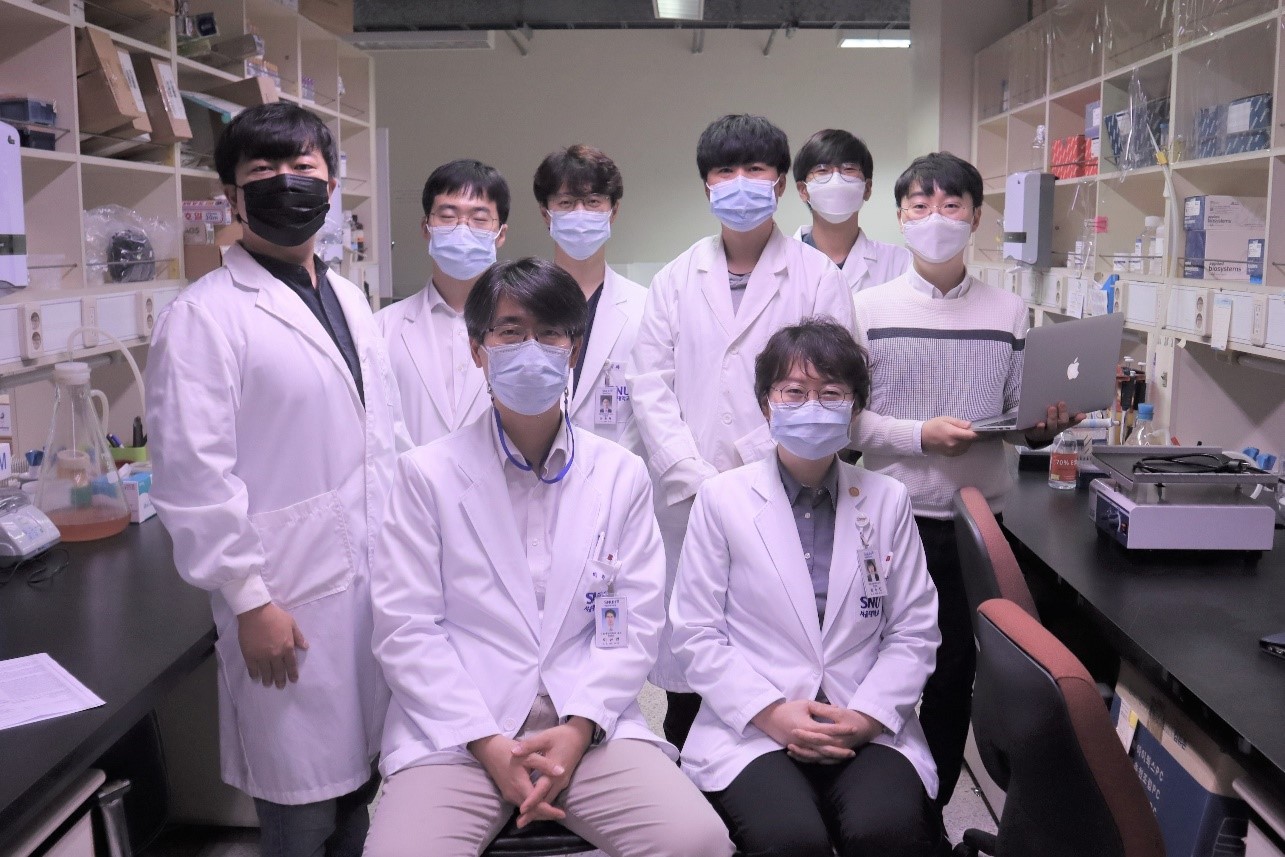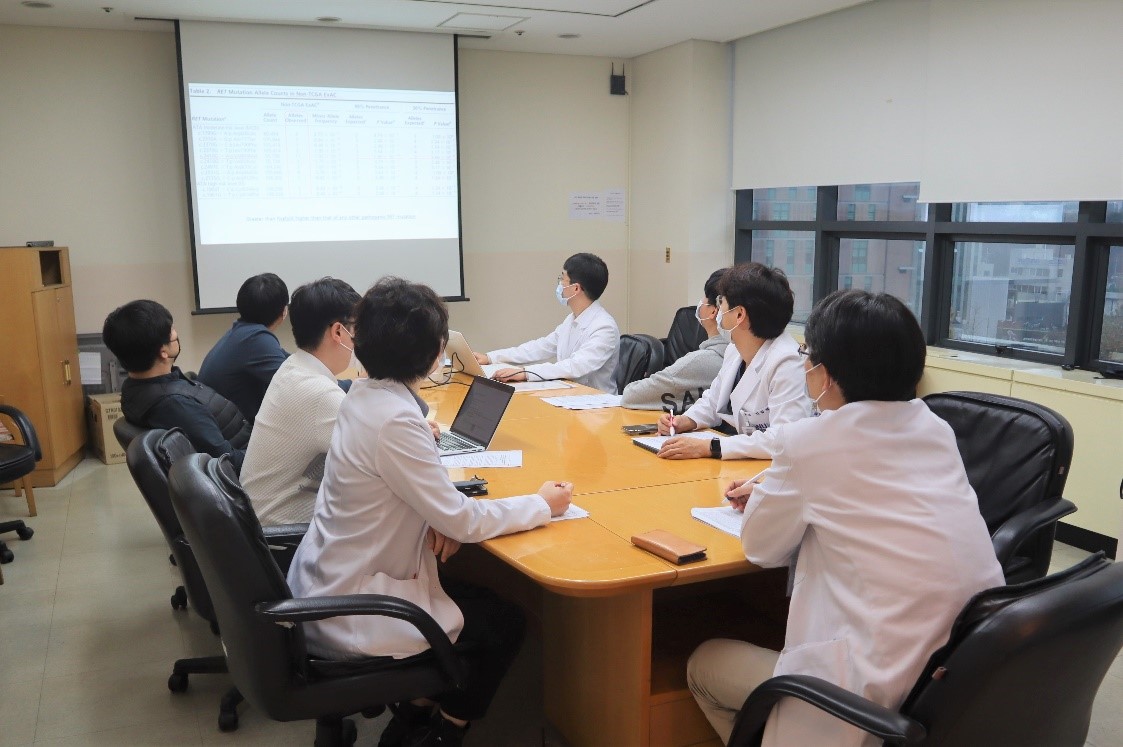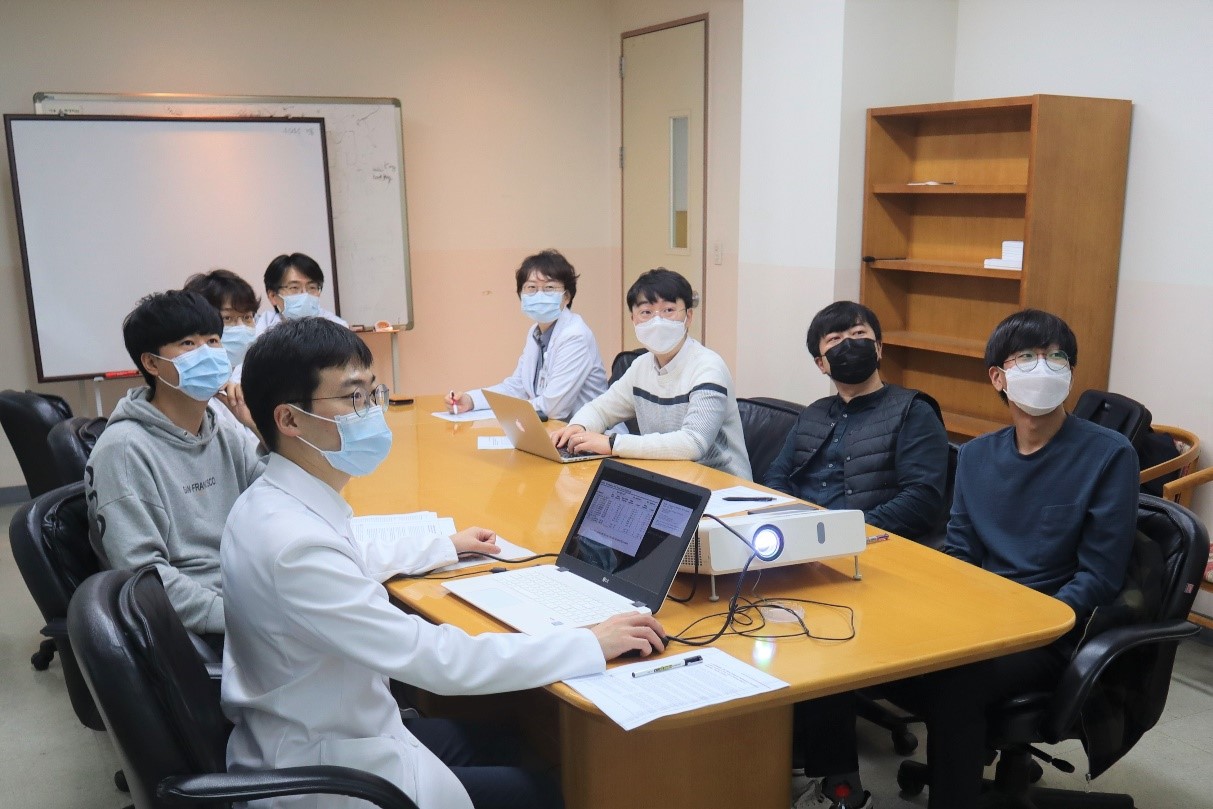
Overview
Laboratory Introduction
TEN(Thyroid & Endocrine Neoplasm) Laboratory
TEN(Thyroid & Endocrine Neoplasm) Laboratory
Related Researcher

Su-Jin Kim Professor
- Email : su.jin.kim.md@snu.ac.kr

Kyu Eun Lee Professor
- Email : kyueunlee@snu.ac.kr
Research topics
Research goals
Research achievements
BRAFV600E Mutation Enhances Estrogen-Induced Metastatic Potential of Thyroid Cancer by Regulating the Expression of Estrogen Receptors. Endocrinology and Metabolism 37.6(2022): 879-890
Role of Local Treatment for Oligometastasis: A Comparability-Based Meta-Analysis. CANCER RESEARCH AND TREATMENT 54.4(2022): 953-969
Prevalence of Postoperatively Detected High-risk Features in 2-to 4-cm Papillary Thyroid Cancers. JOURNAL OF CLINICAL ENDOCRINOLOGY & METABOLISM 107.10(2022): E4124-E4131
Characteristics of germline mutations in Korean patients with pheochromocytoma/paraganglioma. JOURNAL OF MEDICAL GENETICS 59.1(2022): 56-64
A Cross-Sectional Survey of Patient Treatment Choice in a Multicenter Prospective Cohort Study on Active Surveillance of Papillary Thyroid Microcarcinoma (MAeSTro). THYROID 32.7(2022): 772-780
Perioperative hemodynamic instability in pheochromocytoma and sympathetic paraganglioma patients. SCIENTIFIC REPORTS 11.1(2021)
Metabolic changes in serum steroids for diagnosing and subtyping Cushing's syndrome. JOURNAL OF STEROID BIOCHEMISTRY AND MOLECULAR BIOLOGY 210(2021)
BRAFV600E Transduction of an SV40-Immortalized Normal Human Thyroid Cell Line Induces Dedifferentiated Thyroid Carcinogenesis in a Mouse Xenograft Model. Thyroid 30.4 (2020): 487-500.




